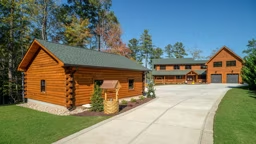Follow this chart for a general idea of how big your water heater should be, but also remember to take into account factors that might bump up your hot water use. For instance:
If you answered yes to any of these questions—or if you have teenagers— you’ll need to up your hot-water ante. Work with you builder or the manufacturer to determine the right size for your home. Water Heater Size Chart:
|
Saving Energy and Space When Choosing a Hot Water Heater
Getting the most out of your hot water heater while using the least amount of space and energy possible.













